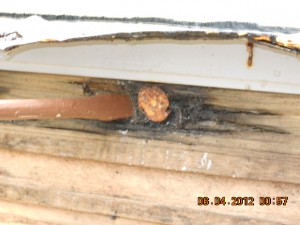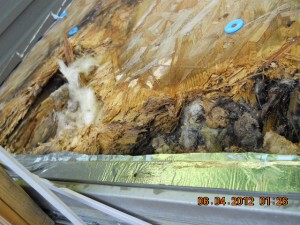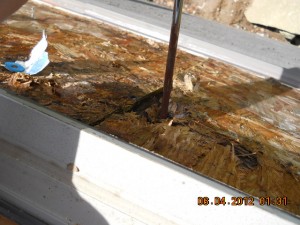Rand Soellner, ArCH, NCARB, hears people say things like: “I don’t need an Architect to design my house, I have the Building Code to protect me.” Well, the harsh reality is, all residential building code inspectors care about is enforcing MINIMUM code. Nothing more; and often less.
Minimum Code Does Not Protect You
Many people become surprised to hear that the latest improvements that they hear about in the media ARE NOT what is required by Minimum Code. “Shocked” is the more appropriate description for some people’s reactions. Like when they already have a house and then something really bad and expensive happens and they wonder why the Residential Code did not protect them from such situations.
THE code is: the International Residential Code. All states in the USA have adopted it, subject to each state’s amendments. Then those states call it the “Illinois Residential Code” or the North Carolina Residential Code,” or whatever the state is.
Even though the people editing the codes are highly responsible people, code development takes decades of discussion and usually unpleasant results, to compel new changes, that seem obvious in hindsight.
Many people are surprised to understand that most building codes didn’t really gather much inertia until the 1940’s. That is not that long ago, and the rather complex codes that exist today are always works in progress and each subsequent edition outclasses the previous one, with safer and more efficient precautions. Unfortunately, sometimes people have to die in fires before the codes are updated to make the buildings safer. The same is true with waterproofing and windows: bad things need to happen to create enough of an outcry to mandate changes and improvements to protect home owners.
Who would think bad things could happen with windows? You put them in, you look through them; life is good, huh? Well, not always. For instance, the Code refers to a section R613 right now, and that in turn dumps the responsibility for a sound window installation on the backs of the window manufacturers and a little known technical standard called ASTM E2112. Unfortunately, this ASTM standard appears to allow window installers to rely on the unrealistic assumption of bonding the window fin (the little tab that sticks out from the perimeter of the window frame) to the “vapor barrier” or “housewrap” that contractors nail up over the house’s sheathing.
Soellner’s firm has seen some very successful “bonds” between the window fin (or “flange”) and the vapor barrier, still connected years later. However, the “elephant in the corner” of this method is that it relies on the assumption that the window itself will remain watertight forever.
As soon as the window leaks (usually along the window sill), that’s when the trouble starts. Why? because wind blown rain finds its way to the window sill, where it ponds, then finds paths of travel through the window sill. Once this happens, the window is now leaking through its sill and into the rough framing below it, rotting out the window sill and the rough framing and whatever lies under that, like the wall studs, the wall sheathing, the lower floor plates (which are not typically pressure-treated when the wood is not in contact with concrete or sufficiently above the ground.

How do manufacturer’s window sills leak? Well, Soellner’s firm just finished performing a forensic architectural study of all of the windows of a homeowner’s house (not one of his designs), and it appeared that all of the windows had screws on their sills that secured a horizontal pivot arm to a moveable sash of casement windows.
It seemed obvious that the water ponding on the sills had trickled down through these screw holes for years, turning the wood on the underside of the sills black with rot. Then the dark rotting stains spread from these holes to portions of the rest of the sill undersides, in an exponential degree of lessening staining and rotting to the proximity to the screw holes.
Also, it appeared that the manufacturer’s original sealant in the corners of some of these particular windows had failed, likely ruptured due to the repeated shrinking and swelling of the water-logged sill and jamb frame members over the years. These windows are about 8 years old. All of the windows with any degree of exposure have failed. Just the material cost of replacement will likely be somewhere around $30,000 and the labor for repairs perhaps another $20,000 or more.

Could this have been prevented? Not by following MINIMUM Code. The code standards quoted do not require the additional rough framing protections that a highly specialized residential architect like the HOME ARCHITECTS ® does.
Are the other people and companies responsible for the previous window failures? It would be hard to point the finger at the builder; he appeared to comply with Minimum Code. And, his flashing tape remains adequately bonded to the original housewrap. The same thing for other professionals involved with the project; they appeared to comply with Minimum Code. How about the window manufacturer? Well; their windows did fail. But that particular window company is now out of business.
Wouldn’t it be wise to have such problem-prone conditions be properly detailed by an experienced residential architect with a national reputation? Especially because Minimum Code doesn’t protect you? How would you like to have a surprise $50,000 repair & window replacement just 8 years after you built your dream house? Understanding this, does the architect’s expertise and fee now seem like something that you can do without?
If you have a problem like this, or would like to avoid it, while having an outstanding house designed for you and your family, give Rand Soellner a call at: 1-828-269-9046. Rand@HomeArchitects.com

Soellner’s firm is the only one we know of that provides a special 3D detail sheet and specifications that entirely wrap the rough framing around the rough openings BEFORE the window is installed, AND while the window is being installed, to Weave the window’s protective tabs and the flashing tapes together, always in a water-resistive manner, to protect the home owner’s rough framing when (rather that if) the manufacturer’s windows begin leaking, conducting the water to outside the structure, rather than allowing it to dribble into the walls.
